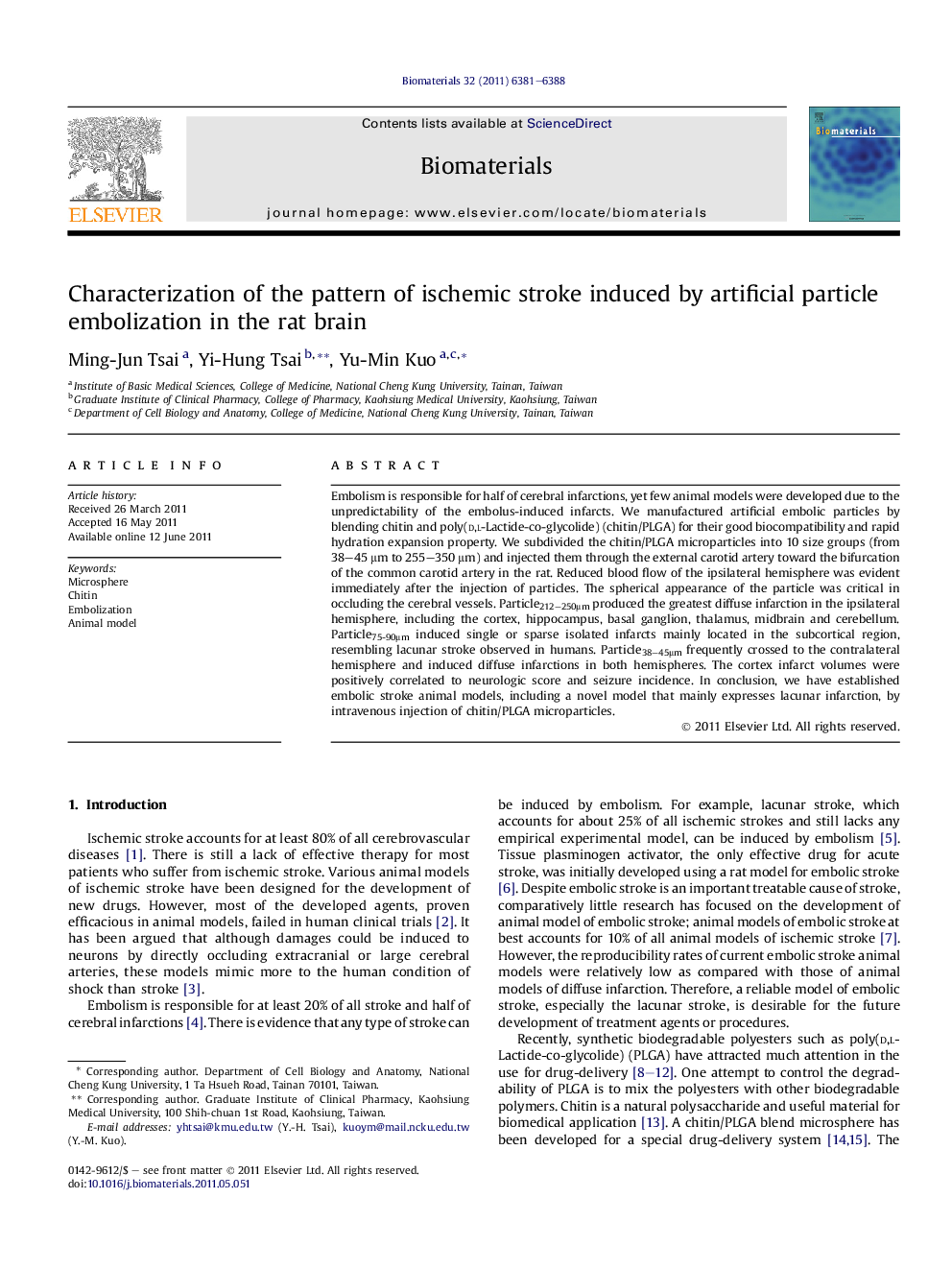| Article ID | Journal | Published Year | Pages | File Type |
|---|---|---|---|---|
| 10229555 | Biomaterials | 2011 | 8 Pages |
Abstract
Embolism is responsible for half of cerebral infarctions, yet few animal models were developed due to the unpredictability of the embolus-induced infarcts. We manufactured artificial embolic particles by blending chitin and poly(d,l-Lactide-co-glycolide) (chitin/PLGA) for their good biocompatibility and rapid hydration expansion property. We subdivided the chitin/PLGA microparticles into 10 size groups (from 38-45 μm to 255-350 μm) and injected them through the external carotid artery toward the bifurcation of the common carotid artery in the rat. Reduced blood flow of the ipsilateral hemisphere was evident immediately after the injection of particles. The spherical appearance of the particle was critical in occluding the cerebral vessels. Particle212-250μm produced the greatest diffuse infarction in the ipsilateral hemisphere, including the cortex, hippocampus, basal ganglion, thalamus, midbrain and cerebellum. Particle75-90μm induced single or sparse isolated infarcts mainly located in the subcortical region, resembling lacunar stroke observed in humans. Particle38-45μm frequently crossed to the contralateral hemisphere and induced diffuse infarctions in both hemispheres. The cortex infarct volumes were positively correlated to neurologic score and seizure incidence. In conclusion, we have established embolic stroke animal models, including a novel model that mainly expresses lacunar infarction, by intravenous injection of chitin/PLGA microparticles.
Related Topics
Physical Sciences and Engineering
Chemical Engineering
Bioengineering
Authors
Ming-Jun Tsai, Yi-Hung Tsai, Yu-Min Kuo,
